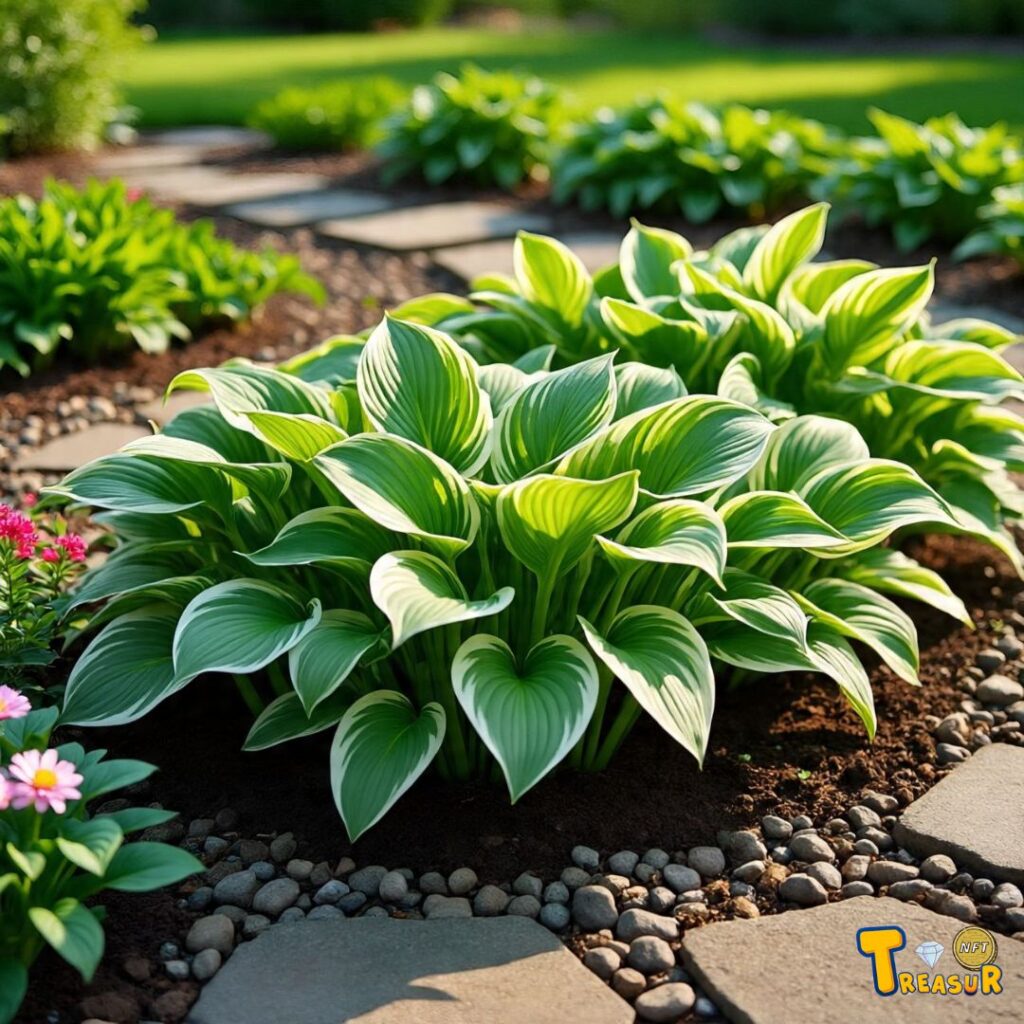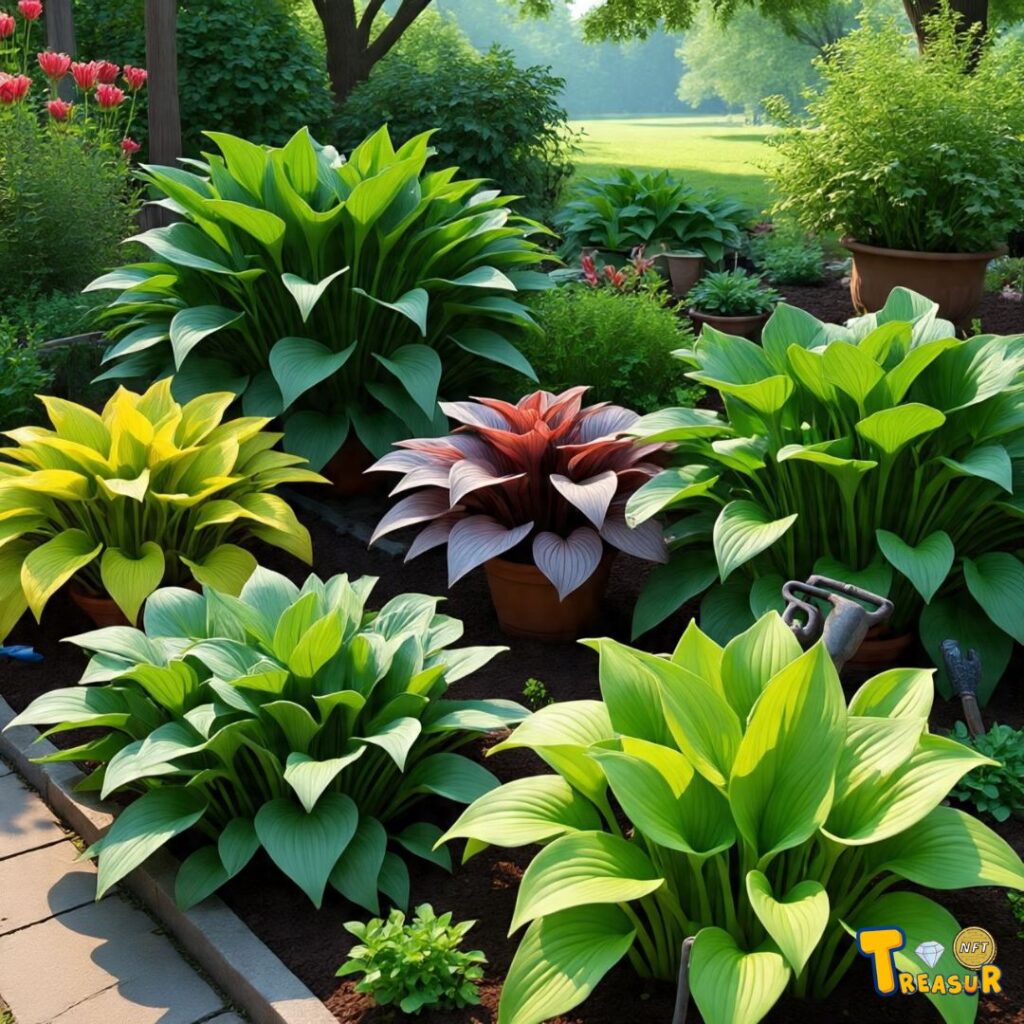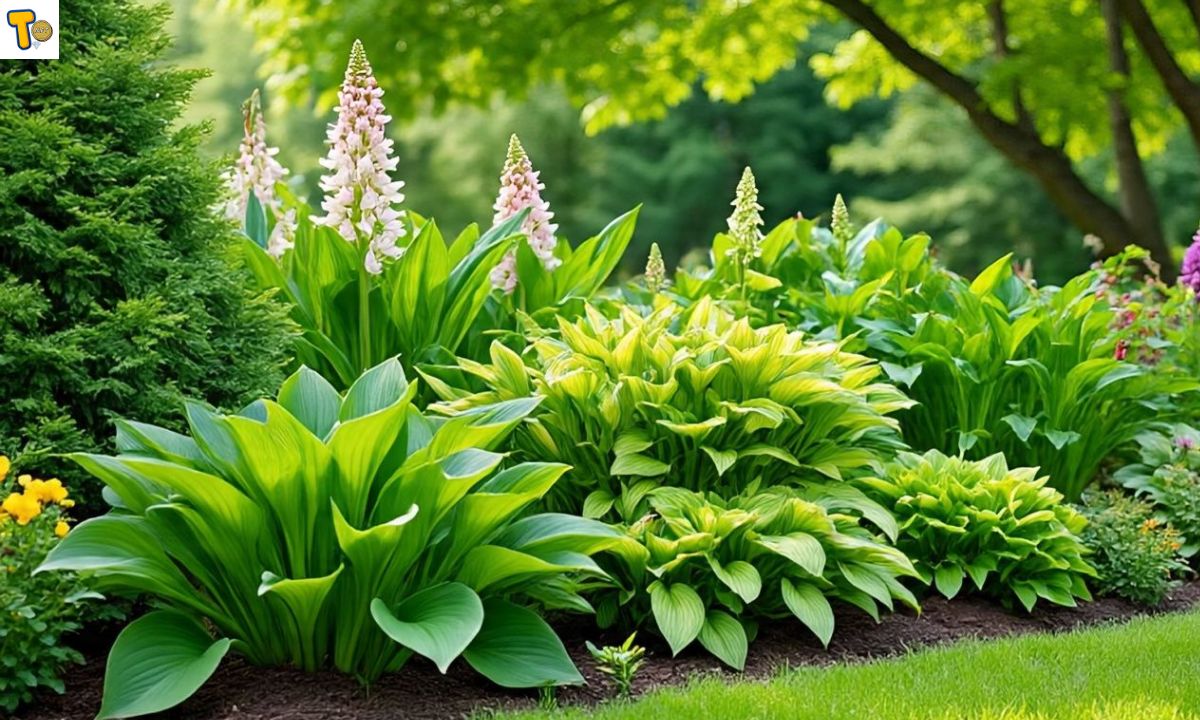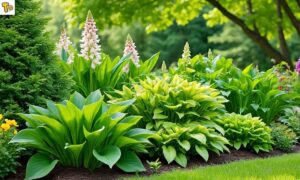Hosta plants are loved for their big, leafy beauty and easy care. They grow best in shady areas and come in many colors and sizes. Whether in a garden bed or a container, hostas add charm to any space. Even beginners can grow them with success. With the right soil, water, and care, they thrive for years. This guide will help you learn how to plant, water, and care for your hostas with ease.
What Are Hostas?
Hostas are herbaceous perennials that come from China, Korea, and Japan. They are mainly grown for their large, striking leaves, which come in shades of green, blue, or even variegated patterns. These plants are shade-loving and do well in low-light areas where many others struggle.
While they’re often used in garden beds, borders, or forest-style landscapes, hostas can also grow beautifully in containers. In summer, they bloom with delicate white or lavender flowers on tall spikes, adding even more charm to their appeal.
Choosing the Right Hosta Variety
With over 3,000 registered types, picking the right hosta for your garden can seem overwhelming. However, focusing on a few key details can help you make the best choice for your space.
Lighting Conditions
Some hosta varieties can handle partial sun, while others must stay in the shade. If you’re planting in a sunny spot, go for sun-tolerant types that can thrive with more light.
Leaf Color
Leaf color often hints at how much sunlight a hosta can handle. Blue-leaved varieties prefer full shade, while gold or green-leaved types may tolerate more sunlight throughout the day.
Plant Size
Hostas range from very small to very large. Some stay just a few inches tall, while others grow up to four feet high. Always check the mature size to ensure it fits your space.
Growth Rate
Some hostas grow quickly and fill up a space within a season or two. Others take three to five years to reach full size. Choose based on how fast you want your garden to fill in.
Main Types of Hosta Plants
Hosta plants come in many varieties, each offering unique features in size, leaf color, and growth habits. Whether you’re planting in a small container or designing a large shaded garden, there’s a hosta type that fits your needs. Below are the main types to consider:
Miniature Hostas
- Grow under 6 inches in height
- Perfect for pots, small spaces, or rock gardens
- Add charm without taking up much room
Blue Hostas
- Feature cool blue-green leaves
- Best suited for deep shade
- Bring a calming tone to shaded areas
Variegated Hostas
- Have multicolored leaves in green, white, or yellow
- Offer contrast and brightness to shady spots
- Popular for their eye-catching foliage
Giant Hostas
- Can grow up to 4 feet tall and wide
- Great for making bold garden statements
- Ideal for borders or large shaded beds
Sun-Tolerant Hostas
- Can handle more sunlight than typical hostas
- Varieties like ‘Sum and Substance’ thrive in partial sun
- Versatile for mixed-light garden areas
Taking Care of Hostas

Hostas are known for being low-maintenance, but they still need some basic care to stay healthy and lush. With the right attention, they can thrive for many years and add beauty to your garden throughout the seasons. From planting to pruning, understanding their needs will help you grow vibrant and strong hosta plants.
Planting the Right Way
To give your hostas the best start, plant them in rich, well-draining soil. Dig a hole that’s as deep as the root ball and twice as wide. Always space the plants according to their mature size, so they have room to grow fully without crowding.
Watering for Healthy Growth
Hostas love moisture, especially during their early growth phase. Keep the soil consistently damp, but not soggy. In hotter months, water deeply once a week. Applying mulch around the base of the plant helps retain moisture and keeps the roots cool.
Feeding the Plants
A slow-release, balanced fertilizer works best for hostas. Apply it in early spring as new leaves begin to appear. Avoid over-fertilizing, as this can lead to weak, floppy growth instead of strong, healthy foliage.
Pruning and Clean-Up
Remove any yellowing, damaged, or dead leaves during the growing season to keep your plants looking clean and vibrant. In autumn, you can trim back all the leaves as they begin to die back naturally.
Dealing with Pests and Diseases
Slugs and snails are the most common pests and often leave holes in the leaves. Organic slug repellents or diatomaceous earth around the plant can help keep them away. Also, watch out for fungal issues like crown rot, which may develop in areas with poor drainage. Keeping the soil well-drained is key to preventing disease.
Landscaping with Hostas
Hostas are incredibly versatile, making them a favorite choice in many garden designs. Whether you’re designing a shady retreat or a lively mixed bed, they bring texture and color to any setting.
Shade Gardens
Hostas thrive in shaded parts of the yard where many other plants fail to grow. Pair them with other shade-loving plants like ferns, heucheras, or astilbes to create a layered, woodland look.
Edging and Borders
Larger hosta varieties work beautifully as background borders, while smaller types can neatly edge walkways and garden beds. Their leaf patterns naturally draw the eye and help define spaces.
Growing in Containers
Hostas grow very well in containers, which makes them great for patios and balconies. Make sure the pots have good drainage and that the plants are watered regularly, especially in warm weather.
Mixing with Other Plants
In mixed garden beds, hostas combine well with flowering perennials, grasses, and shrubs. Their bold leaves contrast nicely with blooms and finer textures, adding depth and visual interest to your garden design.
How to Plant Hostas?

Planting hostas begins with choosing the right location. They grow best in shaded areas with rich, well-drained soil. Start by digging a hole that is twice as wide and just as deep as the root ball. Gently place the plant in the hole, spreading the roots outward.
Fill in the soil carefully and press it down lightly to remove any air pockets. Space the plants based on their full-grown size to avoid overcrowding later. Once planted, water the roots thoroughly to help them settle.
Applying mulch around the base helps retain moisture and prevent weed growth. Regular watering is essential, especially during dry spells, as hostas do not like dry conditions.
How to Grow and Care for Hosta Plants?
To help hostas thrive, plant them in nutrient-rich, moist, and well-drained soil. Shaded areas are ideal, although some types can handle partial sun. Hostas need consistent moisture, so water them often, especially during hot or dry weather.
Mulch the soil around them to keep it cool and moist and to reduce weed growth. Use a balanced, slow-release fertilizer in the spring when new growth appears. Throughout the season, remove any yellow, dead, or damaged leaves to maintain the plant’s shape and health.
Keep an eye out for slugs and snails, which can damage the leaves, and use natural methods to control them. With the right care, your hostas will grow strong and full, providing beauty all season long.
In Summary
Hostas are a favorite among gardeners thanks to their elegant foliage, low maintenance needs, and adaptability. With so many varieties available, it’s easy to find one that suits your space and style. Whether you grow them in containers, along borders, or in shaded beds, hostas offer lasting beauty and structure to any garden. With a little care and the right conditions, they’ll reward you with years of lush, green charm.

I am Raza Chouhan, A Content Writer ✍️ and Guest Blog Expert 🌐, skilled in SEO 🔍, driving traffic 📈and boosting engagement 🚀 Websites around World.

















